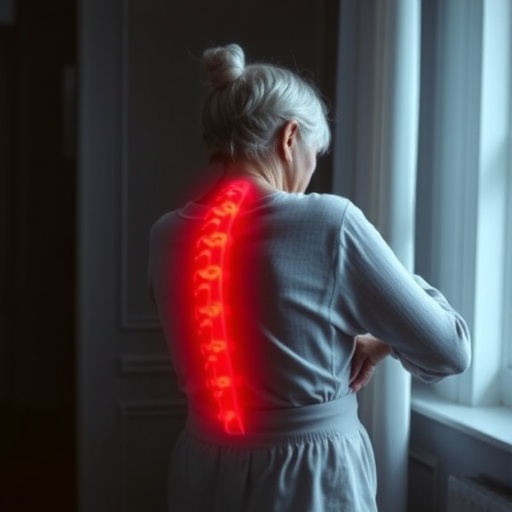Chronic pain is a prevailing health concern affecting millions globally, particularly among older adults residing in community settings. Recent years have witnessed a growing body of research delving into the intricate relationship between chronic pain and the decline in the ability to perform activities of daily living (ADLs). A pivotal systematic review highlighted in the study by Kawashima et al. sheds light on this significant issue, offering insights into the long-term implications of persistent pain on the lives of the elderly population.
The investigation compiled evidence from various longitudinal studies, providing a comprehensive look at how chronic pain can severely hinder the quality of life among older individuals. The research emphasized that as the population ages, the prevalence of chronic pain also increases, leading to multifaceted health challenges. The ability to perform ADLs is a critical indicator of an individual’s functional status and overall well-being. As older adults encounter chronic pain, their capacity to engage in routine activities often diminishes, setting off a cascade of negative effects across their health spectrum.
One of the striking findings of this systematic review was the correlation between the intensity of chronic pain and the degree of impairment in performing ADLs. Elderly individuals experiencing severe, persistent pain reported significant constraints in their daily routines, ranging from basic tasks such as dressing and bathing to more complex actions such as cooking and cleaning. This situation not only limits personal independence but can also lead to increased reliance on caregivers, resulting in emotional and financial strains on families.
The researchers meticulously categorized various types of chronic pain that typically afflict older adults. These included arthritis, neuropathic pain, and pain related to other chronic health conditions like diabetes. Each type of pain presents unique challenges, influencing not only the physical capabilities of the aged but also their psychological resilience. The review found that those suffering from chronic pain also exhibited heightened levels of depression and anxiety, which further exacerbated their difficulties in managing daily tasks.
Addressing these concerns, the study underscored the importance of early intervention and the implementation of effective pain management strategies. It stressed that healthcare providers should adopt a more holistic approach to treatment, which encompasses both physical and psychological support. This dual focus is essential for enhancing quality of life and may include a combination of pharmacological treatments and non-pharmacological approaches, such as cognitive behavioral therapy, physical therapy, and lifestyle modifications.
Another critical aspect examined in the research was the role of social support systems in mitigating the adverse effects of chronic pain on ADLs. The study revealed that older adults who had access to strong social networks and support were better equipped to cope with their pain and maintain their independence. Social interactions not only provided emotional support but also practical assistance, allowing for continued engagement in daily activities.
Furthermore, Kawashima et al.’s review advocated for increased awareness and educational programs aimed at both the elderly and caregiving families. By fostering understanding of chronic pain and its implications, these initiatives could help lessen the stigma associated with seeking help and encourage proactive management of pain-related issues.
The findings of this systematic review are not only relevant for clinicians and caregivers but also carry significant implications for policymakers. As community-dwelling older adults represent an increasingly prominent demographic, strategies to address chronic pain and its impacts on ADLs must be integrated into public health initiatives. This includes advocating for resources to support pain management services and interventions tailored for the elderly population.
In summary, the systematic review by Kawashima et al. serves as a critical call to action for comprehensive research and practical solutions addressing chronic pain among older adults. The interplay between chronic pain and the decline in activities of daily living is a multidimensional issue that requires timely intervention and societal support. Understanding this relationship is key to enhancing the quality of life for frail and vulnerable older adults, ultimately fostering a healthier aging population.
In conclusion, as the global demographic shifts toward an older population, the urgency of addressing chronic pain and its ramifications cannot be overstated. We must prioritize research that informs effective treatment plans while encouraging supportive community environments that empower older adults to lead fulfilling lives, despite the challenges posed by chronic pain.
Subject of Research: The relationship between chronic pain and decline in activities of daily living among community-dwelling older adults.
Article Title: Chronic pain and decline in activities of daily living among community-dwelling older adults: a systematic review of longitudinal studies.
Article References: Kawashima, A., Komatsu, A., Jin, X. et al. Chronic pain and decline in activities of daily living among community-dwelling older adults: a systematic review of longitudinal studies.
Eur Geriatr Med (2025). https://doi.org/10.1007/s41999-025-01299-5
Image Credits: AI Generated
DOI: https://doi.org/10.1007/s41999-025-01299-5
Keywords: Chronic Pain, Older Adults, Activities of Daily Living, Systematic Review, Quality of Life.
Tags: activities of daily living in elderlychronic pain and quality of lifechronic pain in seniorselderly population health issuesfunctional decline in older adultshealth challenges for seniorsimpact of pain on daily livingimplications of persistent painlongitudinal studies on painmanaging chronic pain in older adultsrelationship between pain and daily activitiessystematic review on chronic pain effects





